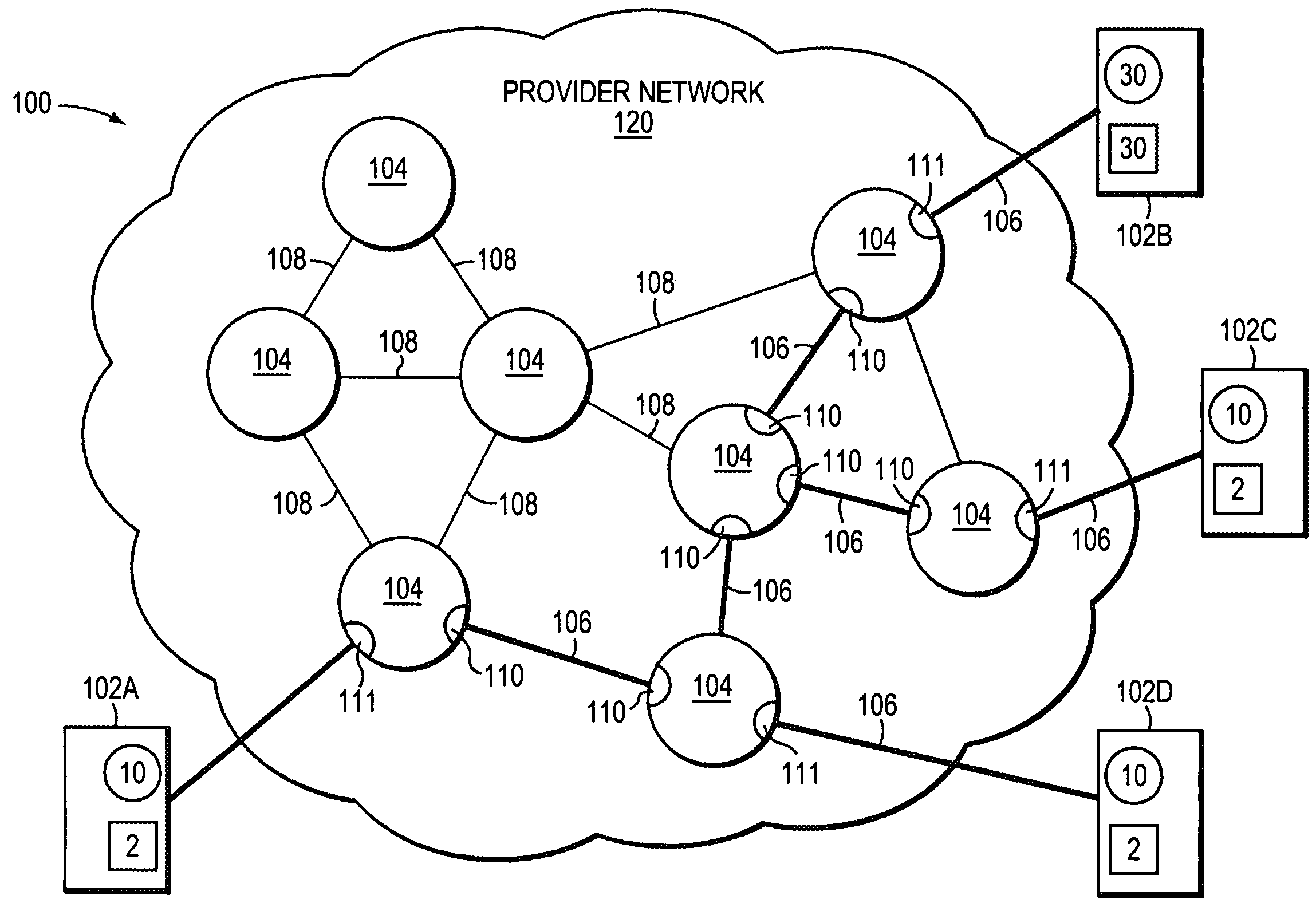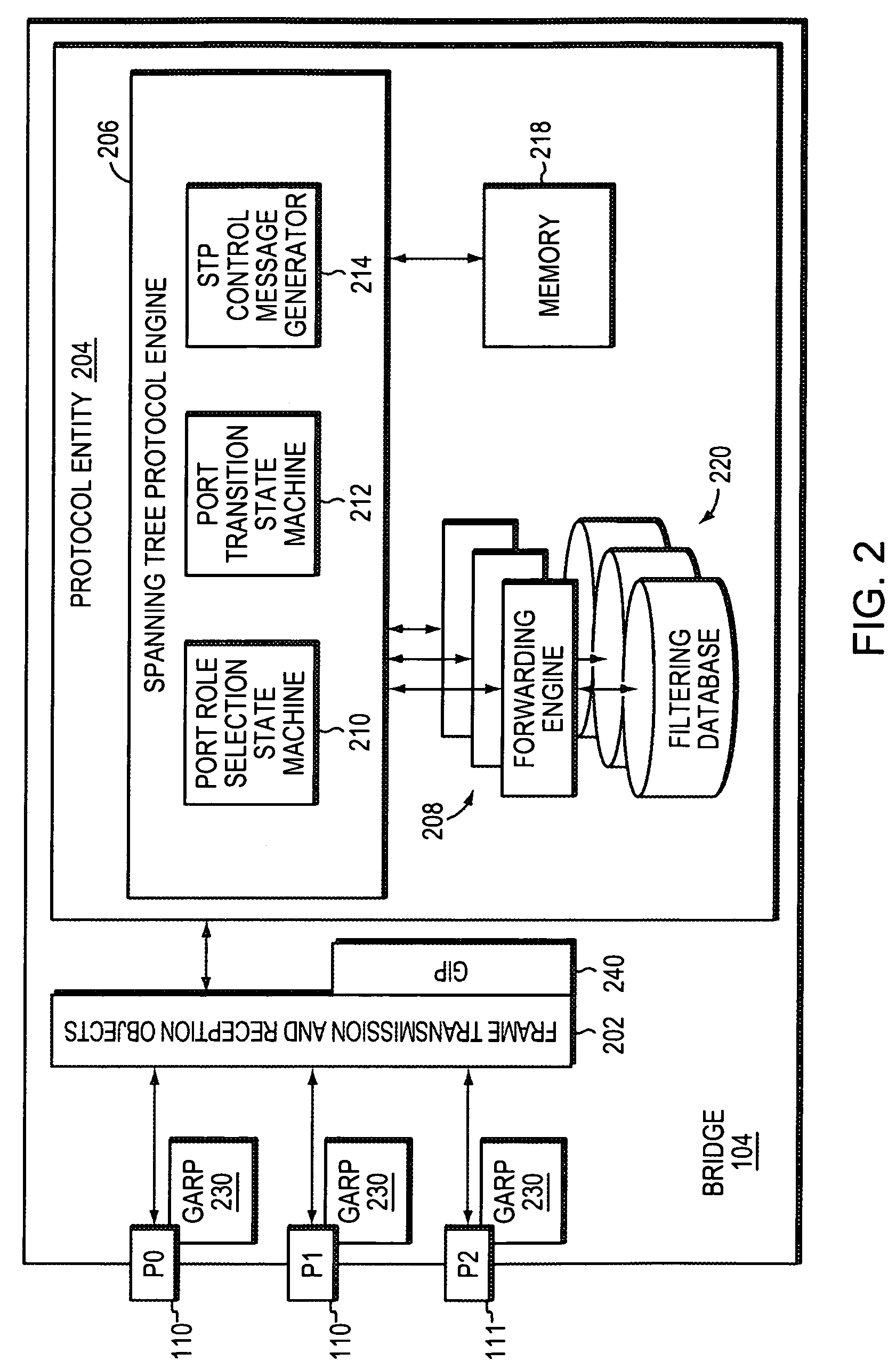Technique for efficiently managing bandwidth for multipoint-to-multipoint services in a provider network
a multi-point to multi-point service and efficient management technology, applied in the field of computer networks, can solve the problems of high undesirable loops, circuitous paths or loops within the network, proliferation of data frames along loops, etc., and achieve the effect of efficient management of bw, reducing excess wasted bw, and effectively managing bw
- Summary
- Abstract
- Description
- Claims
- Application Information
AI Technical Summary
Benefits of technology
Problems solved by technology
Method used
Image
Examples
Embodiment Construction
[0049]FIG. 1 is a highly schematic illustration of a computer network 100 in accordance with the present invention. Network 100 includes a provider network 120 having a plurality of interconnected intermediate network devices 104 which, illustratively, are bridges. The bridges are attached to each other and to end stations 102 (e.g., 102A-D) by a plurality of local area networks (LANs) 106 / 108. The bridges 104 are interconnected by a plurality of LANs 106 / 108, which may comprise shared media or point-to-point links / segments.
[0050]Each bridge 104 has a plurality of ports 110 (and 111) for receiving and forwarding messages across the network 100. The ports of each bridge 104, moreover, may be identified, e.g., by port numbers, such a Port 0 (P0), Port 1 (P1), Port 2 (P2), etc., so that the entities that can be reached by a respective bridge can be associated with the particular port used to reach them. Bridge ports 111 that are coupled to LANs connected only to end stations, and not t...
PUM
 Login to View More
Login to View More Abstract
Description
Claims
Application Information
 Login to View More
Login to View More - R&D
- Intellectual Property
- Life Sciences
- Materials
- Tech Scout
- Unparalleled Data Quality
- Higher Quality Content
- 60% Fewer Hallucinations
Browse by: Latest US Patents, China's latest patents, Technical Efficacy Thesaurus, Application Domain, Technology Topic, Popular Technical Reports.
© 2025 PatSnap. All rights reserved.Legal|Privacy policy|Modern Slavery Act Transparency Statement|Sitemap|About US| Contact US: help@patsnap.com



